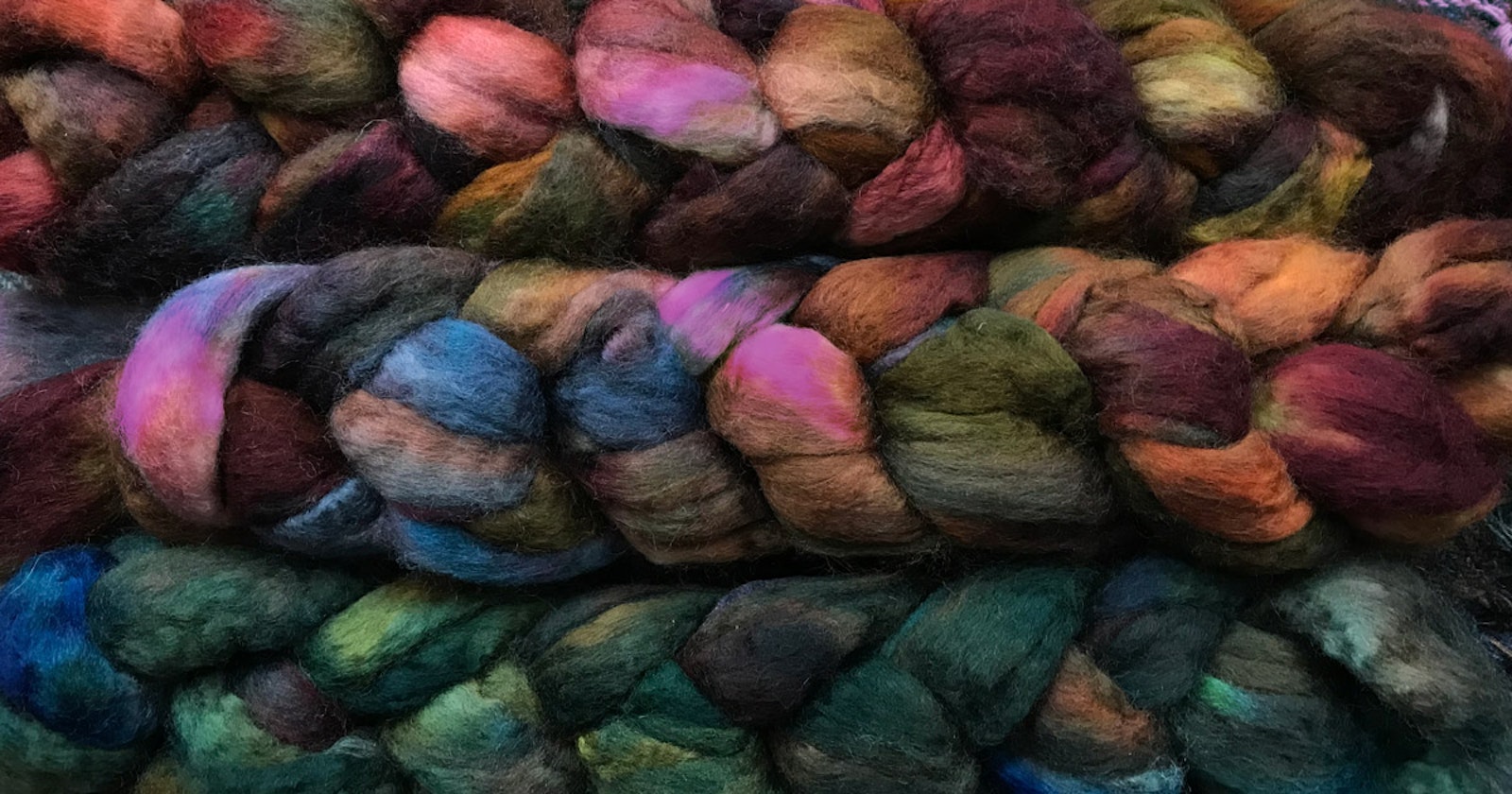I have a confession . . . I don’t usually prepare my own fiber for spinning. But lately, I wish I did.
 | |
| Want to preserve the color variation in a multicolored fleece? Separate out the colors and comb or card it for yourself. These CVM lambs belong to Roy and Myrtle Dow and were photographed at the Estes Park Wool Market. Photos by Christa Tippmann.
|
For me, braids of fiber (often handpainted) are like candy, sweet and addictive. And then there are wonderful fiber mills that will take a lovely fleece purchased at a wool show and turn it into cotton-candy swirls of roving, ready to pull out of the bag and spin at leisure.
So why prepare your own fiber? I suppose there are different reasons for different spinners. For the “process” spinner, whose chief purpose is to enjoy the making of the yarn, you get to spend more time running your fingers through a fleece that you’ve chosen: the texture of the locks transforming into top or roving, smelling the sheepy fragrance, experiencing the satisfaction of seeing the fiber come clean. For the “project” spinner, there’s the ability to get the preparation just right for the intended purpose. Is a true lofty rolag what you have in mind? Better get out the handcards, because no mill can do that for you. Want true top, in which all the tips run in the same direction? Get out the diz and comb it yourself.
Still, I was perfectly content to spin commercial fiber until I took a refresher class with Maggie Casey recently. We carded and combed under Maggie’s tutelage (she reminded us to swing the combs away from you!), and there was just nothing like spinning those rolags and tops. Of course, when we messed it up we had no one to blame. A greasy spot or neps in the wool made me stop and tug at the rolags, and grasping the top in the wrong place made me struggle against the comb.
 | |
| These lovely locks would be a pleasure to comb yourself. This beauty is owned by Dana Ruehlman and was photographed at the Estes Park Wool Market. Photo by Christa Tippmann.
|
So although I’m not an expert by any means, here are my 3 tips for carding and combing success:
1. First, do no harm.
Combs and cards are really sharp. I’ve drawn blood.
2. Wash well.
Combing and carding clean wool is a pleasure. Doing it with greasy, dirty wool is not only a struggle; it’s a precursor to a less-than-happy and uneven spinning experience. It also gets your tools dirty.
3. Card like no one is watching.
Maggie Casey says that other renowned spinners who have seen her card aren’t crazy about her technique, but they like the results a lot. Watch and learn from experts and learn all the new techniques you can, but turn that information into the method that works for you. Combs and cards may be dangerous weapons, but there are in fact no carding police.
Happy spinning—and carding and combing!


